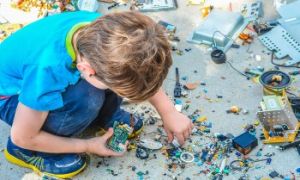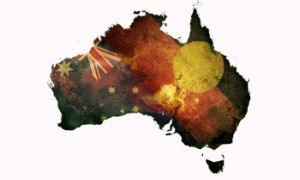

The following lists the sub outcomes, examples of evidence when children can achieve each sub outcome and how educators can promote and help children to achieve EYLF Learning Outcome 3: Children Have A Strong Sense Of Wellbeing.
The following lists the sub outcomes, examples of evidence when children can achieve each sub outcome and how educators can promote and help children to achieve EYLF Learning Outcome 2: Children Are Connected With And Contribute To Their World.
The following lists the sub outcomes, examples of evidence when children can achieve each sub outcome and how educators can promote and help children to achieve EYLF Learning Outcome 1: Children Have A Strong Sense Of Identity.
Due to the unfortunate incidents of young children being left on buses which tragically resulted in the death of a 3-year-old boy, approved providers are encouraged to review their policies and procedures to ensure the safe transportation of children during excursions, drop off and pickups.
In a school-age setting, a quality program is crucial for the children's development, learning and wellbeing. It provides an opportunity for the Educators to provide a variety of experiences to support children and collaborate effectively with the children, families, educators and the school community.
One of the biggest hazards we face as early childhood Educators is back injuries. The amount of times we bend, stretch, and lift throughout the day is endless and this can put a strain on your back, causing serious long-term injuries. The following article provides information on Back Risks, Prep Before The Day, Strategies To Support Back Care Throughout The Day and more.
Just imagine a line down the centre of the body. Crossing the midline is a child's ability to reach across the middle of the body with arms and legs crossing over the opposite side. The following article provides information on Why Crossing The Midline Is Important, Activities To Improve A Child's Ability in Crossing The Midline and more.
Policies are an important part of an early childhood setting. They are a legal requirement that identifies and minimise risks of various tasks and responsibilities demonstrated by Educators and provide information for families of how situations are handled.
Policy and Procedures are an integral part of the documentation that is required to meet legislative requirements. They prevent uncertainty about how particular situations are handled and support Educators to understand their roles and responsibilities. The following article provides information on What Should Policies Include, Testing Your Policy (Case Scenario), Successful Policies, Policy Pitfalls, Policies In The National Regulations and more.
When Parents are sending food from home, it's important that they understand they need to bring snacks and pack a lunch that is healthy and nutritious for their child. For some parents, who may be busy, it may be challenging to pack the right foods so it's vital that the service and families collaborate to promote healthy eating.
 As an Educator in Australia, your pay rate falls under the Children’s Services Award 2010. This award states the minimum amount that an employer can… Read More
As an Educator in Australia, your pay rate falls under the Children’s Services Award 2010. This award states the minimum amount that an employer can… Read More
 When working as a qualified Early Childhood Teacher (with a university degree) within a service, your rate of pay will come from the Educational Services… Read More
When working as a qualified Early Childhood Teacher (with a university degree) within a service, your rate of pay will come from the Educational Services… Read More
 When working as a Diploma Qualified Educator your pay rate is from the Children's Services Award 2010. This Award states your minimum rate of pay… Read More
When working as a Diploma Qualified Educator your pay rate is from the Children's Services Award 2010. This Award states your minimum rate of pay… Read More
 When working as a Cert 3 Qualified Educator, your pay rate is from the Children's Services Award 2010. This Award states your minimum rate of… Read More
When working as a Cert 3 Qualified Educator, your pay rate is from the Children's Services Award 2010. This Award states your minimum rate of… Read More
 Educational Leaders play a crucial role in their early childhood service by ensuring that the educational program aligns with best practices and supports the holistic… Read More
Educational Leaders play a crucial role in their early childhood service by ensuring that the educational program aligns with best practices and supports the holistic… Read More
 With the new national child safety reforms kicking in on 1 September 2025, early childhood services like yours have a real opportunity to lead the… Read More
With the new national child safety reforms kicking in on 1 September 2025, early childhood services like yours have a real opportunity to lead the… Read More
 In early childhood education and care, ratios are more than a technicality—they are a frontline safeguard. Every child deserves responsive supervision, emotional connection, and developmental… Read More
In early childhood education and care, ratios are more than a technicality—they are a frontline safeguard. Every child deserves responsive supervision, emotional connection, and developmental… Read More
 Here’s a comprehensive Mobile Phone and Smart Watch Policy tailored for early childhood education and care (ECEC) services in Australia, aligned with the latest 2025… Read More
Here’s a comprehensive Mobile Phone and Smart Watch Policy tailored for early childhood education and care (ECEC) services in Australia, aligned with the latest 2025… Read More
 The Sea of Fish Challenge is a national initiative that invites children, educators, families, and communities to create and display fish artworks as a symbol… Read More
The Sea of Fish Challenge is a national initiative that invites children, educators, families, and communities to create and display fish artworks as a symbol… Read More
 Cold weather play is incredibly beneficial for early childhood development! It helps children build resilience, strengthen their immune systems, and develop essential motor skills. Here’s… Read More
Cold weather play is incredibly beneficial for early childhood development! It helps children build resilience, strengthen their immune systems, and develop essential motor skills. Here’s… Read More

When playing with things, children are usually attracted to those that are colourful, easily handled...
See more...
Introducing children to science at a young age assists in their brain development. Science experiments...
See more...
Walking Together, developed by the Victorian Aboriginal Education Association, is a free inclusion support and...
See more...© 2009-2025 Aussie Childcare Network Pty Ltd. All Rights Reserved.

